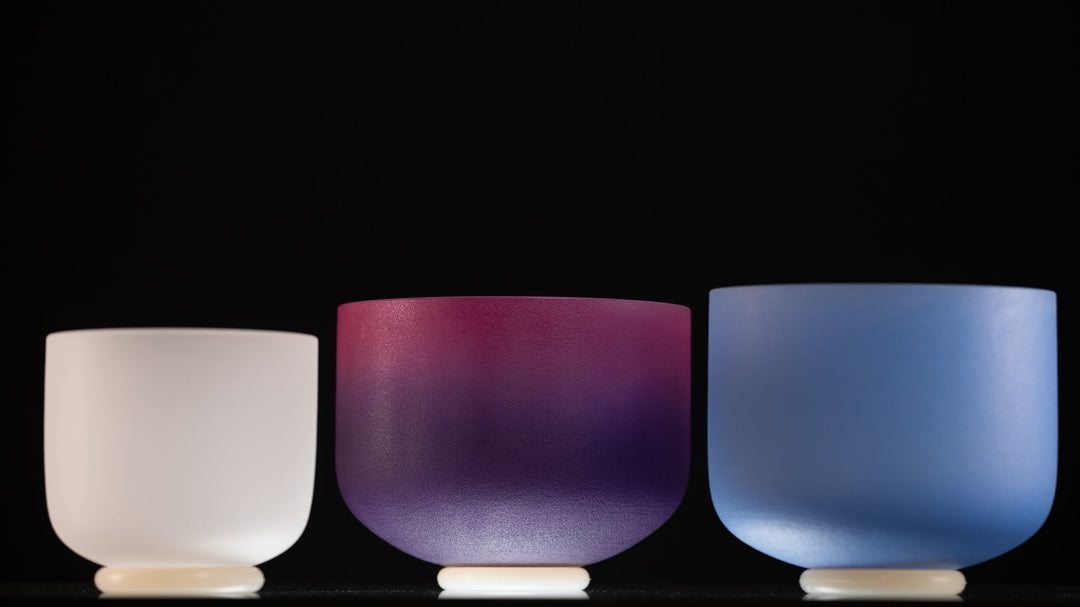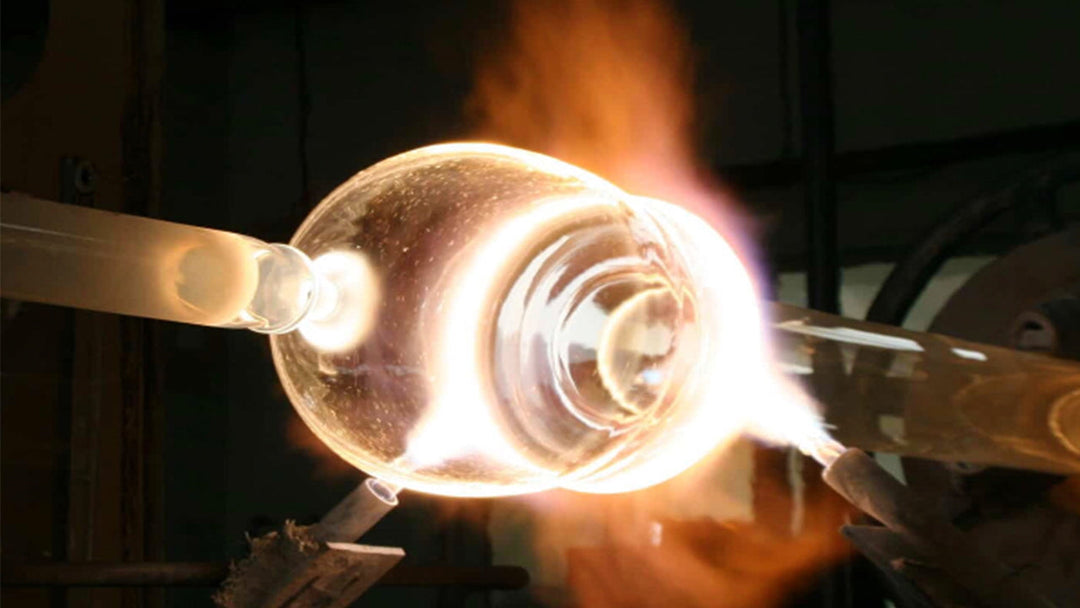A Guide to Mallets for Singing Bowls

When playing singing bowls, the mallet you choose becomes part of the way you express your intention through the bowl.. The way it glides, taps, or circles sound from a bowl shapes the entire experience. While it might seem like a simple accessory, the mallet plays a huge role in how your bowl responds, how easily it sings, and what kind of tone or feeling it delivers.
This guide focuses mainly on mallets for crystal singing bowls, though we’ll touch on metal bowls briefly at the end. There are many mallet types available, and depending on the material, shape, and style, each one interacts differently with the surface of your bowl. Some draw out warmth and fullness, others bring out clarity or high harmonics. Some are better for chiming, others for circling. And your own preferences will ultimately come into play.
Let’s explore the different types of mallets, what they’re made of, how they behave with different bowls, and how to choose one that resonates with your personal sound practice.
The Standard Suede Mallet

The most common mallet that comes with many crystal singing bowls is a light PVC or plastic tube wrapped with suede. It’s a basic tool, and one many people start with. These are especially nice for chiming, giving a soft, warm tone that’s easy on the ears and not too sharp.
When it comes to circling the bowl it’s a bit more nuanced. The suede creates drag against the rim of the crystal bowl. Some people enjoy that texture because it helps them stay connected to the movement. Others find it scratchy, inconsistent, or distracting. It really comes down to the bowl you’re using and what kind of feel you prefer.
Cleaning suede mallets is tough. Once they pick up oils from your hands or dirt from your bowls or the ground, they tend to stay stained. In our experience, there’s no great way to clean them best to keep them as clean as possible from the start or replace them when they wear down.
Silicone Mallets
Silicone mallets have become a go-to option for many sound practitioners. They generally offer more grip on the surface of the bowl and are easier to use for singing the bowl with a circular motion. They're often the mallet we recommend to those just starting out.
Silicone mallets come in many styles, and their performance can vary widely depending on the quality of the silicone and the handle design.
Plastic Handle with Silicone Head

This is one of the most accessible types. These mallets usually have a smooth plastic handle and a half silicone attached to the end. They’re widely available and work pretty well for most crystal singing bowls.
They’re usually lightweight, which is helpful for smaller bowls but can feel a little flimsy when working with larger or heavier pieces. The tone is usually bright and clean. This lower quality silicone tends to attract dust and oils, wearing out and getting dirty faster over time.
These are great mallets to start with, but as your practice deepens, you may find yourself looking for something with better balance and longer life.
Crystal Handle Mallets

Mallets with clear crystal or acrylic handles are beautiful. There’s something ceremonial about holding one; it feels like a wand. They often have a silicone on one end and a polished, smooth handle that visually complements many bowls.
As lovely as they are, they’re not always the easiest to use. The smoothness can make them a little slippery, and they tend to be top-heavy, which throws off balance when circling. This makes it harder to maintain consistent pressure around the rim.
Wooden Handle with Silicone Ball

This is where things start to get really good. Silicone mallets with wooden handles offer excellent balance, a solid grip, and more precise control. The added weight gives you a grounded feel, which helps when you’re circling the bowl to produce sustained tones.
These mallets are incredibly versatile and you can use them for both chiming and singing. They work really well with frosted singing bowls.
They’re also easier on the hands during longer sessions, making them a good choice for practitioners who play for extended periods.
Sacred Singing Bowls™ "Magic Mallets" – A Personal Favorite

Our favorite mallet really depends on the bowl, but we consistently return to the “Magic Mallets” from Sacred Singing Bowls™. They’re made with premium silicone, have a nice weight, and feel good in the hand. The tone is clean, the glide is smooth, and the silicone tends to hold up better over time.
They also seem to work across a wide variety of bowls, especially alchemical quartz and textured bowls where other mallets may squeak or drag.
If you’re buying a new bowl online and you’re not sure which mallet to pair it with, it’s always a good idea to ask the seller what they recommend. A reputable source will usually know what works best and might even have tricks or tips for getting the best tone from that specific piece.
Cleaning Tips
Silicone mallets eventually get dirty oils from your hands, dust from your shelves, and debris from your bowls all build up over time.
Silicone Mallets: We’ve had decent luck using Goo Gone and a soft cloth. You might need to work at it a bit, but it can help restore some of the original grip and sheen. Avoid harsh cleaners or anything that could degrade the silicone.
Suede Mallets: These are much harder to clean. Once they’re stained or darkened, they tend to stay that way. Best practice is simply to store them well and use them with clean hands.
Mallets for Chiming Only
If you’re focused on chiming rather than circling, you’ve got some great options beyond the standard suede striker.
Threaded or Yarn-Wrapped Mallets
These mallets are often used for gongs and have tightly wound yarn or thread and offer a clear, sharp chime. Some players love the bite and clarity, especially for attention-grabbing sounds or transitions in a sound bath. Others find the tone a bit too bright or harsh for crystal bowls, so go easy at first.
Dragonfly-Style Mallets
Dragonfly mallets have a soft, cushioned head and produce a gentle, warm chime. They’re ideal for more tender tones or delicate settings where you don’t want to startle or overpower. We’ve had great success with them and often reach for one when we want to invite a bowl into its softest voice.
A Quick Word on Metal Singing Bowls
While this article focuses on crystal bowls, metal singing bowls also respond well to many of the same mallets. You can use suede, wood, silicone, or soft-felt gong mallets to chime them.

To get them to sing, use the suede-wrapped wooden striker they usually come with. Silicone mallets can also work for circling, but the feel is different. It takes a gentler hand and more patience to draw out a steady tone. The result is less dramatic than crystal, but deeply grounding and beautiful in its own right.
The right mallet is the one that brings out the voice your bowl wants to share. There’s no perfect answer, just a balance of feel, tone, and intention. Ask questions when you buy, experiment with different materials, and give yourself the time to listen closely.
Sound healing is subtle work. Sometimes, a tiny shift in angle or touch is all it takes to open the door to something truly resonant.


